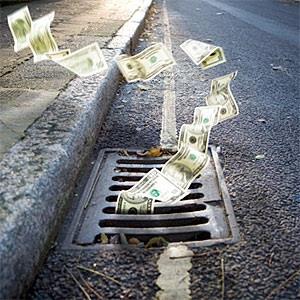After more than 50 years leading the fight to legitimize attention deficit hyperactivity disorder, Keith Conners could be celebrating.
Severely hyperactive and impulsive children, once shunned as bad seeds, are now recognized as having a real neurological problem. Doctors and parents have largely accepted drugs like Adderall and Concerta to temper the traits of classic A.D.H.D., helping youngsters succeed in school and beyond.

But Dr. Conners did not feel triumphant this fall as he addressed a group of fellow A.D.H.D. specialists in Washington. He noted that recent data from the Centers for Disease Control and Prevention show that the diagnosis had been made in 15 percent of high school-age children, and that the number of children on medication for the disorder had soared to 3.5 million from 600,000 in 1990. He questioned the rising rates of diagnosis and called them “a national disaster of dangerous proportions.”
“The numbers make it look like an epidemic. Well, it’s not. It’s preposterous,” Dr. Conners, a psychologist and professor emeritus at Duke University, said in a subsequent interview. “This is a concoction to justify the giving out of medication at unprecedented and unjustifiable levels.”
The rise of A.D.H.D. diagnoses and prescriptions for stimulants over the years coincided with a remarkably successful two-decade campaign by pharmaceutical companies to publicize the syndrome and promote the pills to doctors, educators and parents. With the children’s market booming, the industry is now employing similar marketing techniques as it focuses on adult A.D.H.D., which could become even more profitable.

Few dispute that classic A.D.H.D., historically estimated to affect 5 percent of children, is a legitimate disability that impedes success at school, work and personal life. Medication often assuages the severe impulsiveness and inability to concentrate, allowing a person’s underlying drive and intelligence to emerge.
But even some of the field’s longtime advocates say the zeal to find and treat every A.D.H.D. child has led to too many people with scant symptoms receiving the diagnosis and medication. The disorder is now the second most frequent long-term diagnosis made in children, narrowly trailing asthma, according to a New York Times analysis of C.D.C. data.
Behind that growth has been drug company marketing that has stretched the image of classic A.D.H.D. to include relatively normal behavior like carelessness and impatience, and has often overstated the pills’ benefits. Advertising on television and in popular magazines like People and Good Housekeeping has cast common childhood forgetfulness and poor grades as grounds for medication that, among other benefits, can result in “schoolwork that matches his intelligence” and ease family tension.

A 2002 ad for Adderall showed a mother playing with her son and saying, “Thanks for taking out the garbage.”
The Food and Drug Administration has cited every major A.D.H.D. drug — stimulants like Adderall, Concerta, Focalin and Vyvanse, and nonstimulants like Intuniv and Strattera — for false and misleading advertising since 2000, some multiple times.
Sources of information that would seem neutral also delivered messages from the pharmaceutical industry. Doctors paid by drug companies have published research and delivered presentations that encourage physicians to make diagnoses more often that discredit growing concerns about overdiagnosis.
Many doctors have portrayed the medications as benign — “safer than aspirin,” some say — even though they can have significant side effects and are regulated in the same class as morphine and oxycodone because of their potential for abuse and addiction. Patient advocacy groups tried to get the government to loosen regulation of stimulants while having sizable portions of their operating budgets covered by pharmaceutical interests.
Companies even try to speak to youngsters directly. Shire — the longtime market leader, with several A.D.H.D. medications including Adderall — recently subsidized 50,000 copies of a comic book that tries to demystify the disorder and uses superheroes to tell children, “Medicines may make it easier to pay attention and control your behavior!”
Profits for the A.D.H.D. drug industry have soared. Sales of stimulant medication in 2012 were nearly $9 billion, more than five times the $1.7 billion a decade before, according to the data company IMS Health.
Read more from the source:
No comments:
Post a Comment